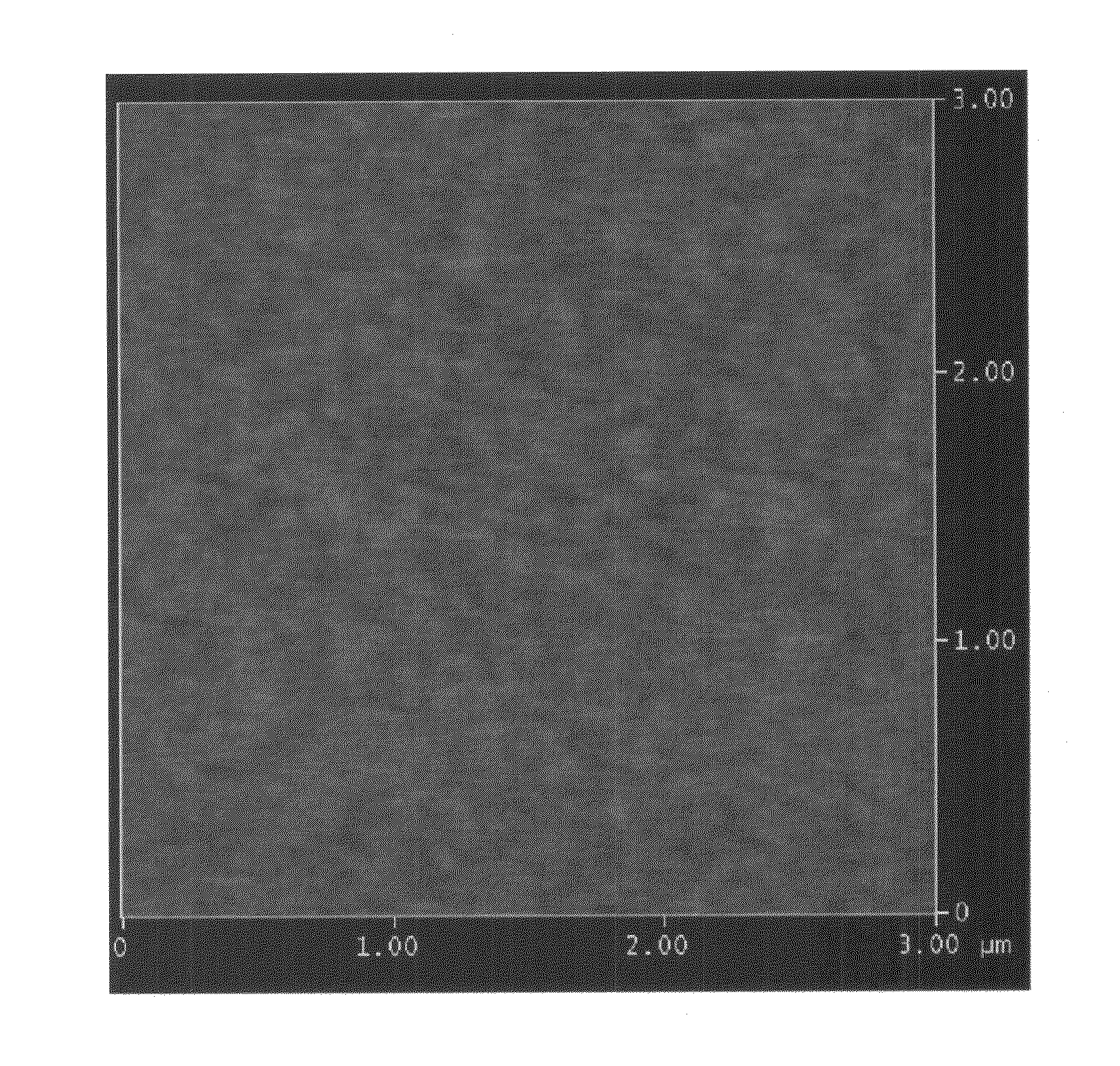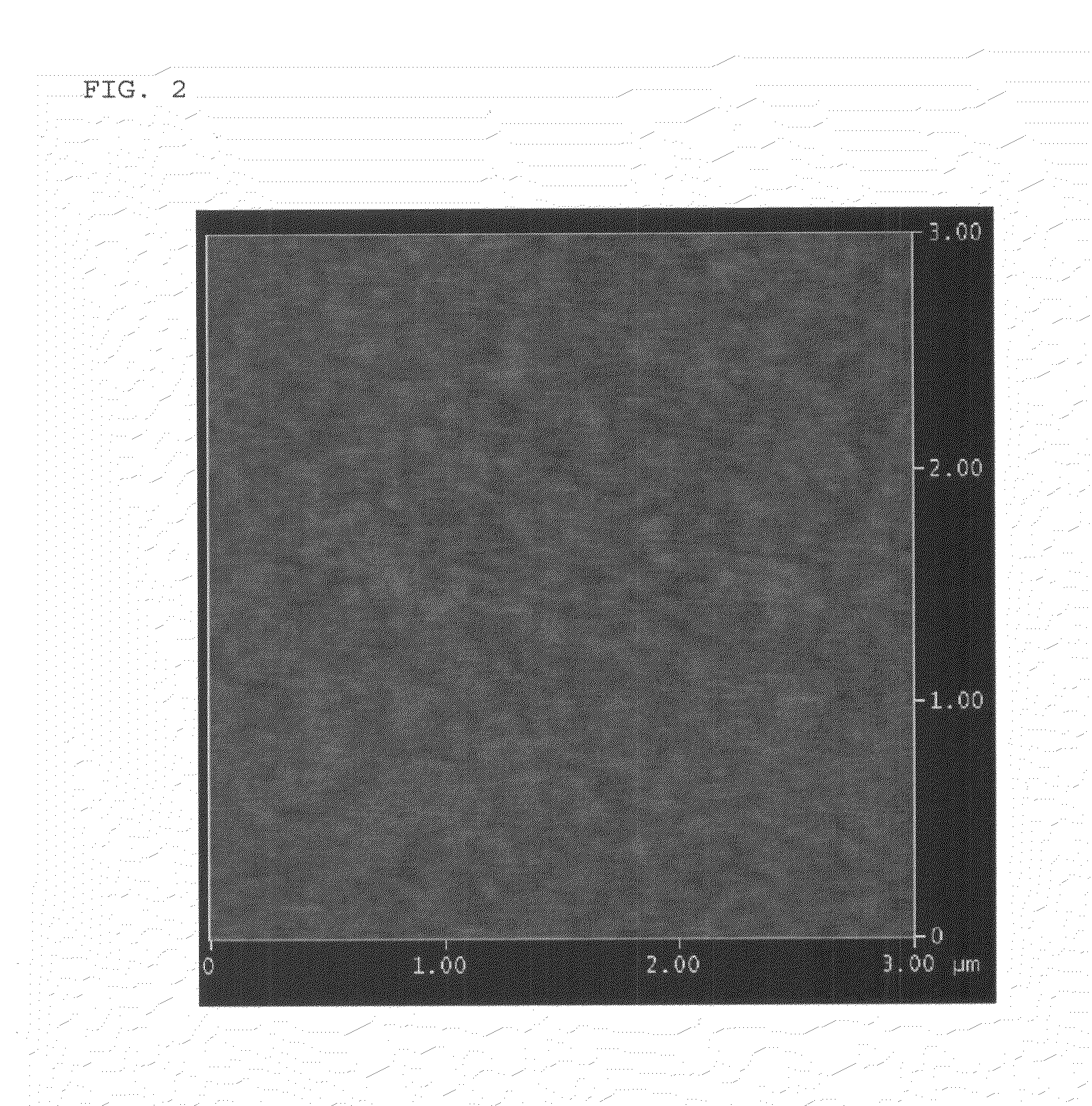Glass substrate for information recording medium and method for producing the same
a technology of information recording medium and glass substrate, which is applied in the direction of glass tempering apparatus, instruments, manufacturing tools, etc., can solve the problems of insufficient satisfactory conventional glass substrates, inability to obtain desired surface properties, and inability to achieve desired surface properties, etc., to achieve high strength to withstand high speed rotation or drop impact, good balance, and high surface properties. smooth
- Summary
- Abstract
- Description
- Claims
- Application Information
AI Technical Summary
Benefits of technology
Problems solved by technology
Method used
Image
Examples
examples
[0101]Hereinafter, suitable Examples of the present invention will be explained. However, the present invention is not intended to be limited to these Examples.
[0102]The glasses of the Examples of the present invention were all produced as follows. Raw materials of oxides and carbonates were mixed, and this mixture was fused at a temperature of about 1200 to 1400° C. using a crucible made of quartz or platinum. The batch that served as the raw material was sufficiently fused so that any melt residue would not be generated. The resulting batch was heated to a temperature of about 1350 to 1500° C. and then cooled to a temperature of 1450 to 1250° C., so as to carry out removal of the bubbles generated inside the glass and refining. Subsequently, while the temperature was maintained, a predetermined amount of glass was discharged and molded into a disk shape by a direct press method, with the temperature of the upper frame set at 300±100° C. and the temperature of the lower frame set a...
example 45
[0117]A 2.5-inch polished substrate for HDD (65φ×0.635 mmt) of Example 8 was immersed in a salt mixture of potassium nitrate and sodium nitrate (KNO3:NaNO3=1:3) at 400° C. for 0.25 hours, and thereby a compressive stress layer was formed at the surface. It was confirmed that this substrate had its ring flexural strength improved to a value four times larger than the value obtained before forming the compressive stress layer (260 MPa). Here, the ring flexural strength means a flexural strength measured by a concentric ring bending method, in which a thin disk-shaped specimen having a diameter of 65 mm and a thickness of 0.635 mm is produced, and the strength of the disk-shaped specimen is measured using circular-shaped support ring and load ring.
example 46
[0118]A 2.5-inch polished substrate for HDD (65φ×0.635 mmt) of Example 44 was immersed in a salt mixture of potassium nitrate and sodium nitrate (KNO3:NaNO3=1:3) at 400° C. for 0.5 hours, and thereby a compressive stress layer was formed at the surface. It was confirmed that this substrate had its ring flexural strength improved to a value eight times larger than the value obtained before forming the compressive stress layer (270 MPa).
PUM
| Property | Measurement | Unit |
|---|---|---|
| Young's modulus | aaaaa | aaaaa |
| Young's modulus | aaaaa | aaaaa |
| thickness | aaaaa | aaaaa |
Abstract
Description
Claims
Application Information
 Login to View More
Login to View More - R&D
- Intellectual Property
- Life Sciences
- Materials
- Tech Scout
- Unparalleled Data Quality
- Higher Quality Content
- 60% Fewer Hallucinations
Browse by: Latest US Patents, China's latest patents, Technical Efficacy Thesaurus, Application Domain, Technology Topic, Popular Technical Reports.
© 2025 PatSnap. All rights reserved.Legal|Privacy policy|Modern Slavery Act Transparency Statement|Sitemap|About US| Contact US: help@patsnap.com



